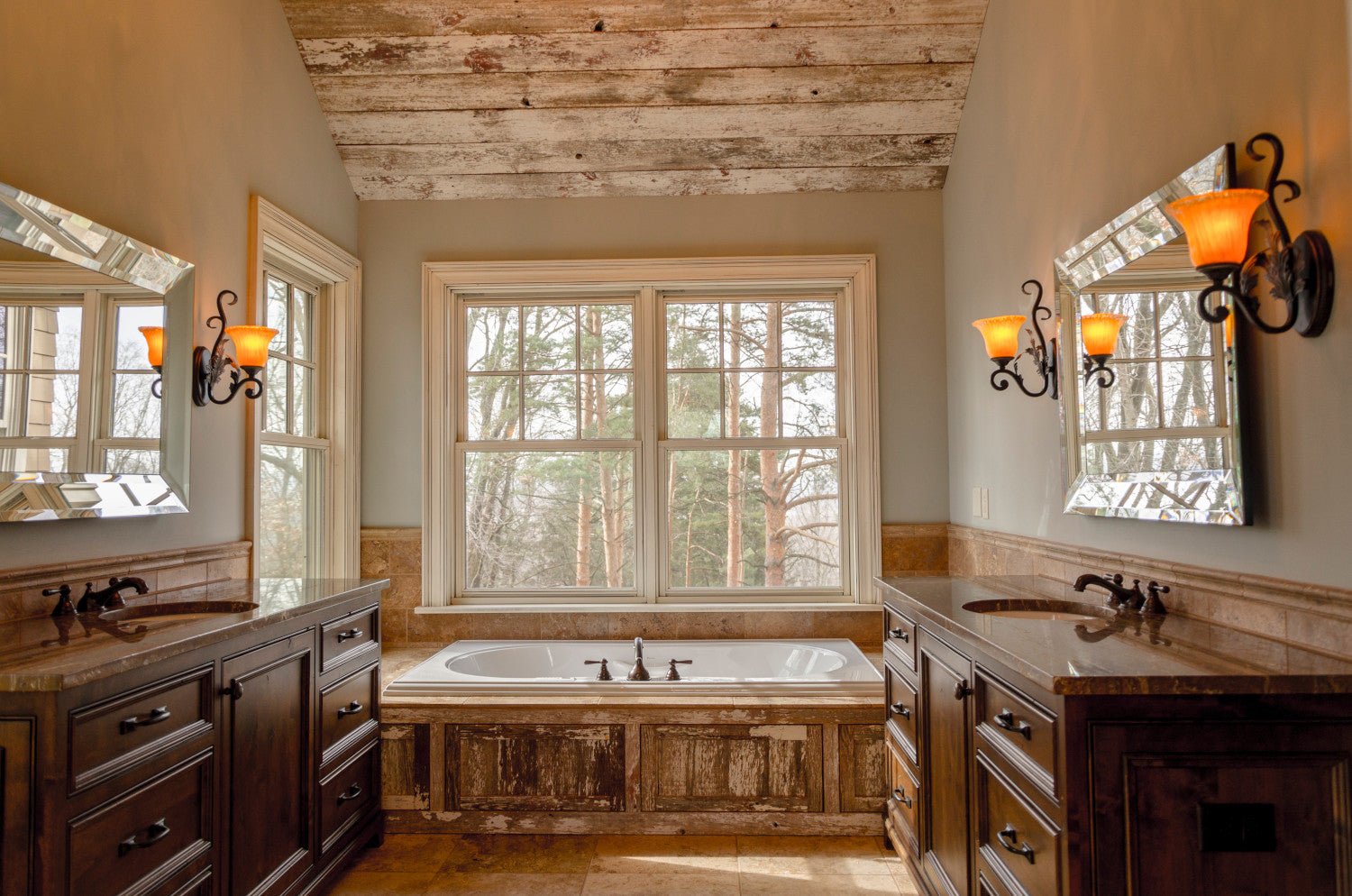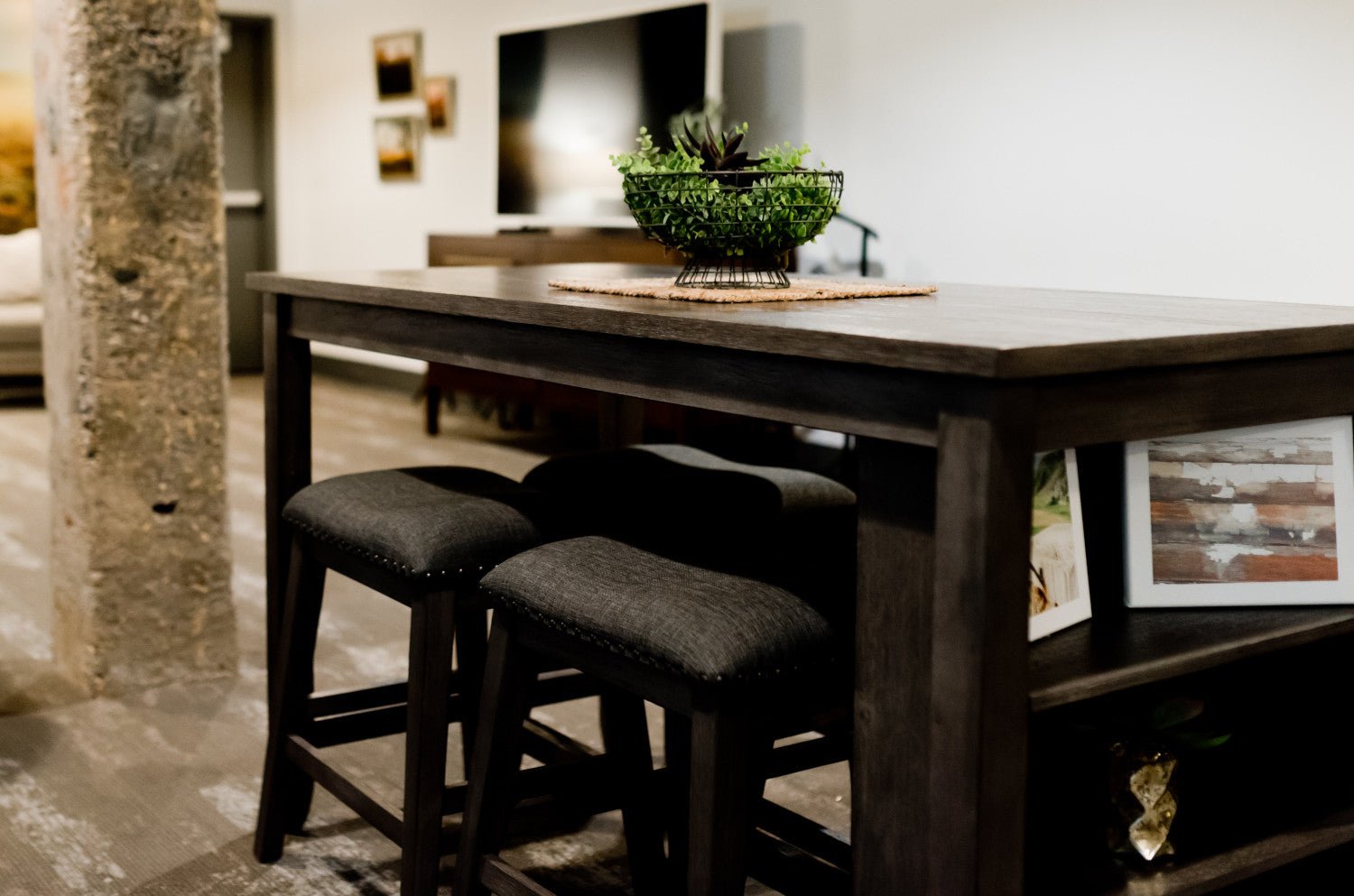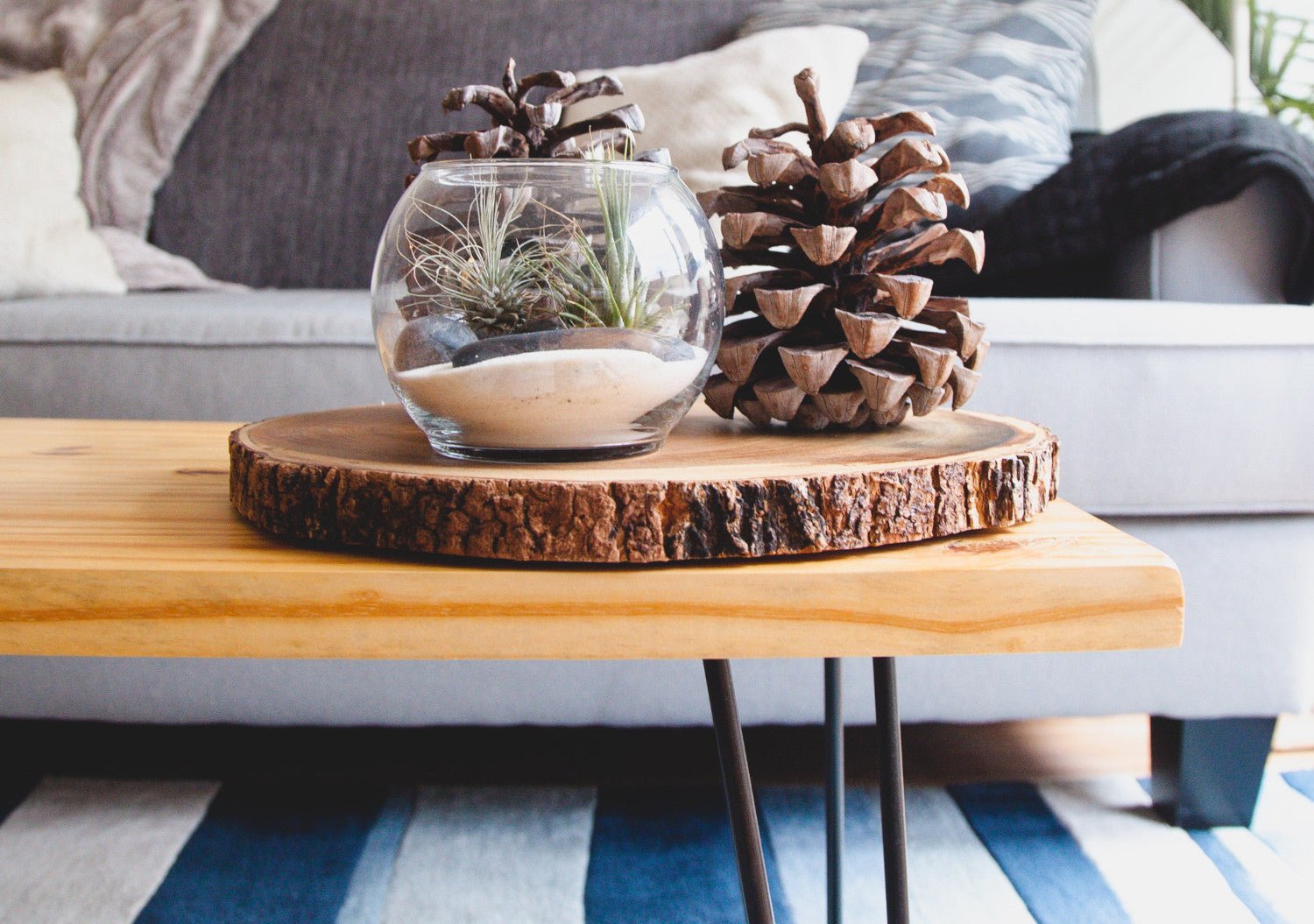Rustic interior design is all about embracing the beauty of ruggedness. It focuses on natural, rough, and aged elements that incorporate a sense of peace and simplicity in a space. The design style encompasses a wide range of variations, including modern rustic, coastal, and Tuscan, among many others. But there is one thing that all of these variations have in common: they focus on raw, natural beauty.
If you want to incorporate rustic interior design in your abode, then you came to the right place! In this article, we will define rustic interior design for you. We'll explain all its most important elements, and share some tips to help you turn your home into a rustic style haven. Towards the end, we'll tell you where you can find the perfect rustic furniture to complete your aesthetic. First, let's talk about what rustic interior design is and how it came about.
What is Rustic Interior Design?
"Out with the new and in with the old."
So, what is rustic interior design?
Rustic interior design is characterized by earthy, natural, and weathered elements. It aims to invoke a sense of relaxation and warmth while keeping the aesthetic as simple as possible. Rustic interiors focus on refined roughness, giving the space a rugged yet charming personality. So, newness, perfection, and polished aesthetics have no room in rustic design.
Instead, the rustic design style features elements that remind one of nature, including aged wood, natural stone, and organic fibers, among others. A more modern rustic style may also come with modern furniture and amenities, an open floor plan, as well as exposed architectural elements. Either way, the rustic interior design style revolves around highlighting the beauty of natural ruggedness.
Where Did Rustic Interior Design Originate?
The rustic style is inspired by those who built their homes far away from the cities during the 1900s. Most of these settlers built their homes in a rush using only what they could find locally. Moreover, space in these homes was limited - and settlers were unable to bring a lot of furniture. So, these pioneers built their furniture from scratch, repurposed what they could find in nature, and made do with "unfinished" homes.
While the early settlers probably did not love living in such scarce homes, the design style holds a unique charm today. The rustic interior design style is a remembrance of past times when things were simpler, as opposed to today's modern world.
What Are The Key Elements of The Rustic Interior Design Style?
From modern rustic to cottage-style, there are many variations of the original rustic look. Nevertheless, all of these variations revolve around a few primary elements, including:
Natural Materials
A rustic home features raw, natural materials that have gone through minimal alteration. Aged natural wood is a common material for flooring, furniture, and decor. Natural stone, on the other hand, is a great choice for flooring, countertops, fireplaces, and wall accents. Depending on the variation of rustic style, these materials can be dark, light, or somewhere in between. In the traditional sense, however, the rustic style focuses more on darker shades.
Textured, Organic Textiles
Rustic-style textiles are made from simple organic materials, including burlap, wool, jute, and sisal. These natural materials coincide with the idea that early settlers used what they could find in nature to make their homes cozier. Compared to your usual fabrics, textured textiles give off a more weathered feel, making a room look cozier and lovingly "used".
Non-Shiny Metal
When designing a rustic space avoid new or polished metal. When choosing light fixtures, furniture, decor, and anything else with metallic finishes, go for copper, brass, iron, or pewter. If you want to give your space an even older aesthetic, opt for industrial hardware and perhaps even reclaimed metal.
Antique Wooden Furniture
Antique furniture is a must-have for any rustic style room. Scour antique stores, secondhand shops, and estate sales for wooden pieces that complement the natural materials that already exist in your space. For example, if your flooring is made with dark mahogany, look for wall decor made from the same material to keep the color scheme consistent.
Furniture made from reclaimed wood also adds charm to a rustic space. Plus, reclaimed wood is a great alternative if you can't find furniture with the perfect kind of material.
Rugged Lines
The rustic design style heavily focuses on rugged lines and silhouettes. The idea is to make the space look "unrefined", so it makes sense for shapes to be imperfect.
Exposed Architectural Elements
In rustic style rooms, you are likely to find purposely exposed architectural elements. Exposed wood beams are common. Bare brick walls are also popular for rustic-industrial design combinations. Some rustic-style spaces also have open shelves, exposed trusses, and unrefined walls surrounding the fireplace.
How to Incorporate Rustic Interior Design In Your Home
When you start designing your home in the rustic style, you'll find it surprisingly easy. After all, you are simply stripping down the space to its bare bones, and then making it look purposely unrefined. However, there is a fine line between chic ruggedness and charmless age. And in order to achieve the former, you must know how to play up each rustic element's strengths.
That said, we've compiled some of the best tips to help you design the perfect rustic style home:
Keep Your Color Palette Simple
The rustic design revolves around the colors of nature. Use rich browns, wood grains, beige, blues, and/or greens as your main colors. Then, simplify your palette with white or light gray. For accents, choose muted shades of red, yellow, blue, or black. Keep in mind that if you can't find the color in nature, it's not a good color for a rustic interior.
Prioritize Function Over Form
When choosing rustic decor and furniture, prioritize simplicity. Imperfections are welcome, rugged lines even more so. So, avoid pieces with complicated patterns, multiple colors, and straight lines. Instead, go for decor and furniture that feature simple colors, and imperfect lines and silhouettes, e.g. irregularly-shaped coffee tables, chunky sofas, handmade wooden seats, etc.
Look For Rustic Decor
Rustic home decor is a must if you want to achieve that uniquely aged aesthetic for your home. Start with nature's art, such as branches, antlers, stones, and maybe even wooden stumps. Then, complement these natural elements with non-shiny metal, such as vintage hardware, antique music players, and industrial-style furniture.
Finally, don't forget to add organic textiles. Choose from a wide plethora of textured, natural fabrics for your throw pillows, area rugs, sofa covers, and throws.
Don't Go Overboard
While the rustic design style is far from being minimalist, keep in mind that the adage "less is more" also applies to it. You want the key elements to take visual precedence in the room, which is also one of the primary benefits of minimalist design. That said, avoid overdoing it with the furniture and decor. Otherwise, you may end up with a room that looks "noisy" instead of calming.
For example, when decorating a coffee table, choose a central piece that you want people to see first. Include a few smaller accents, and then leave it be. Remember that the less decor there is, the more people can focus on the most important elements of your design.
Mix and Match Furniture
A mismatched mix of furniture will look as if you've thrown them together randomly--and that's exactly the type of aesthetic you want to achieve. Why? Because rustic decor is often about imperfection and repurposing. You want your furniture to look as if you've collected them over the years to create a cozy, well-loved space. So, don't be afraid to mix and match pieces, even if they don't seem to go well together at first.
Can You Combine Contemporary And Rustic Styles?
Contemporary and rustic styles go well together, creating a modern version of the traditional rustic style. The key is to find the perfect balance. We recommend keeping the "bones" of the space rustic and then incorporating contemporary elements along the way. For example, keep the exposed wood beams, but instead of vintage light fixtures, choose modern metallic lamps.
It is also a good idea to modernize furniture for a contemporary rustic style. Instead of rugged furniture, choose modern rustic furniture that features sleeker edges and more refined surfaces. Furthermore, consider swapping bulky pieces for smaller, more stylish ones (especially for bookcases, shelves, and wardrobes). Check out our article on contemporary living room ideas for more tips.
Find The Perfect Balance Between Rustic and Contemporary With Nathan James
If you want durability, quality, and affordability all at the same time, Nathan James has everything you need. Our fine selection of rustic furniture is like no other, only featuring high-quality pieces that combine contemporary and chic ruggedness in the perfect balance.
We have coffee tables, desks, consoles, bar stools, bookcases, and end tables--everything you need to design the perfect rustic style interior. The best part? We've focused on keeping our prices affordable without sacrificing quality.
So, don't wait any longer. Shop at Nathan James today and get what you need to transform your home into a beautiful rustic haven.





